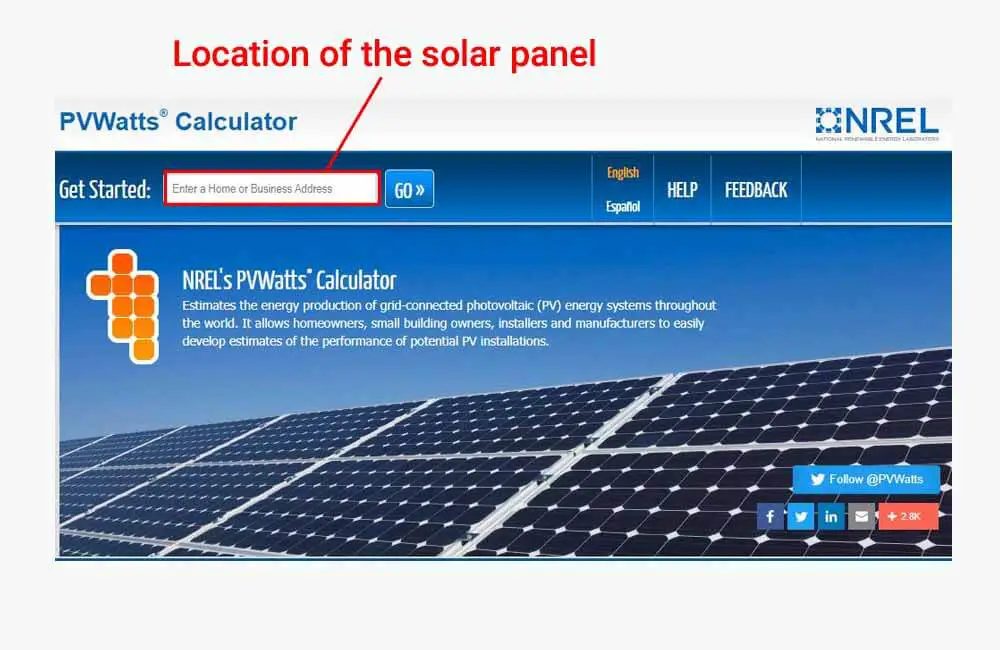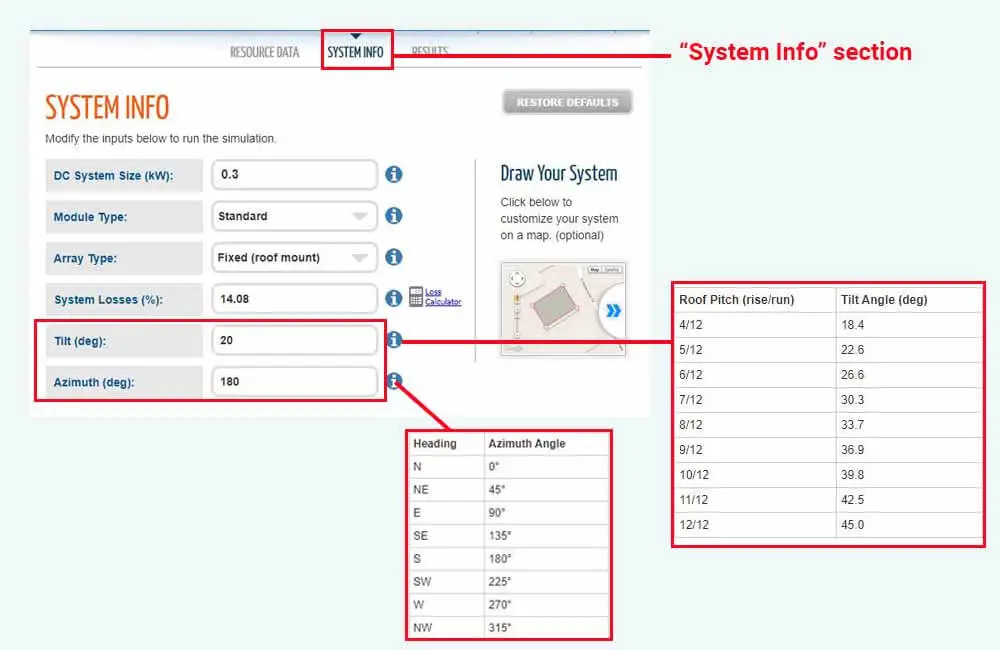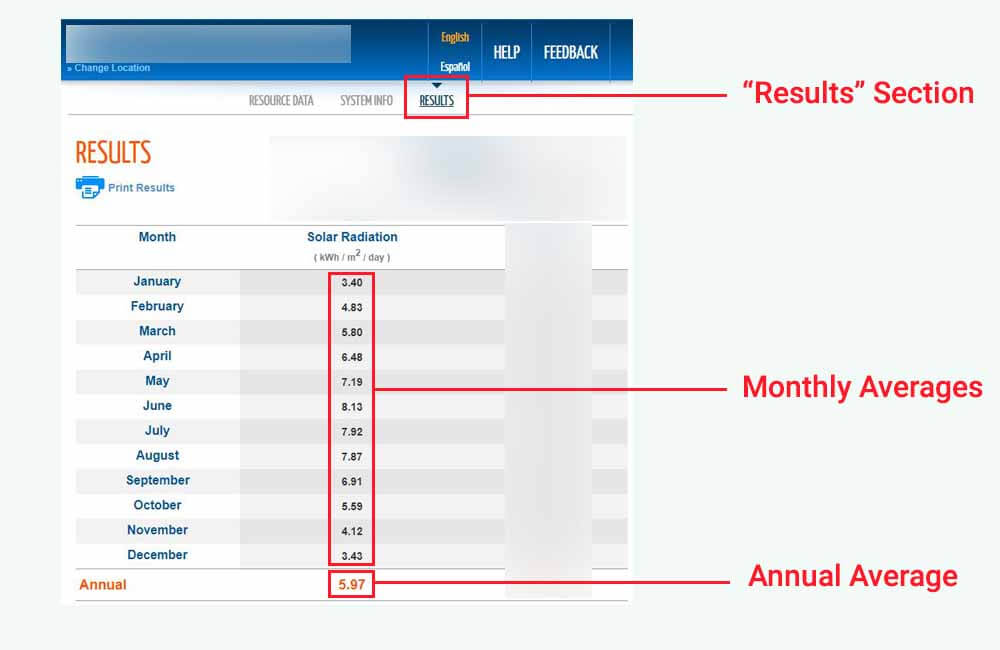300 Watts of solar power is a great starting point for anyone looking to harness the abundant and free power of the sun. But, what exactly can a 300 Watt solar panel run? How much electrical energy can it produce? and how does this energy production compare to the energy consumption of your appliance?
By reading this article, you’ll find clear answers to these questions, you’ll have a better understanding of the electricity production of a 300 Watt solar panel, as well as the electricity usage of your appliances.
Finally, you have a better idea of whether 300 Watts of solar power is sufficient for your needs.
What can a 300 Watt solar panel run?
The energy production of a solar panel, and the energy consumption of an appliance, over a certain period of time, are both measured in Watt-hours (Wh) or kiloWatt-hours (kWh). With 1 kWh equating to 1000 Wh.
Related: Difference between kW and kWh
On average, a 300 Watt solar panel produces between 1200 Wh (1.2 kWh) and 1500 Wh (1.5 kWh) of energy per day. This amount of energy is enough to run common appliances such as lights, TVs, fans, cooktops, coffee makers, laptops, phones and tablets, and even a mid-sized refrigerator if the usage of these appliances is correctly managed.
Related: How much electricity does 300 Watt solar panel produce?
To provide some perspective on what 1200 to 1500 Watt-hours (1.2 – 1.5 kWh) of energy, the typical daily energy production of a 300 Watt solar panel, can run, the following table lists common appliances, their hourly energy consumption (in Watt-hours per hour), and the estimated amount of time they would be able to run on that energy production:
| Appliance | Hourly Energy Consumption (Watt-hours/hour) | Runtime on the Average Daily Energy Production of a 300 Watt Solar Panel |
| 12V fridge (1.5-2 Cu. ft.) | 25 Wh/hour | 48 – 60 hours |
| Mini-fridge (2.5-5 Cu. ft.) | 50 Wh/hour | 24 -30 hours |
| RV fridge (7-11 Cu. ft.) | 75 Wh/hour | 16 – 20 hours |
| Freezer (5-10 Cu. ft.) | 30 Wh/hour | 40 – 50 hours |
| Freezer (11-15 Cu. ft.) | 40 Wh/hour | 30 – 38 hours |
| Microwave | 1300 Wh/hour | ~ 1 hour |
| Hot plate | 1500 Wh/hour | ~ 1 hour |
| Induction Cooktop | 1200 Wh/hour | ~ 1 hour |
| Air fryer | 1500 Wh/hour | ~ 1 hour |
| Slow Cooker | 150 Wh/hour | 8 – 10 hours |
| Electric Kettle | 1800 Wh/hour | ~ 45 minutes |
| Coffee Maker | 800 Wh/hour | ~ 1 hour and 30 minutes |
| TV (32in) | 60 Wh/hour | 20 – 25 hours |
| TV (40in) | 70 Wh/hour | 17 – 22 hours |
| TV (50in) | 90 Wh/hour | 13 – 17 hours |
| Desktop Computer | 120 Wh/hour | 10 – 13 hours |
| Laptop Computer | 50 Wh/hour | 24 – 30 hours |
| Tablet Charger | 10 Wh/hour | 120 – 150 hours |
| Phone Charger | 5 Wh/hour | 240 – 300 hours |
| LED lights | 15 Wh/hour | 80 – 100 hours |
| Incandescent lights | 70 Wh/hour | 17 – 22 hours |
| Electric Blanket | 100 Wh/hour | 12 – 15 hours |
| Window Air Conditioner (5000 BTUs) | 480 Wh/hour | ~ 3 hours |
| Well Pump | 1400 Wh/hour | ~ 1 hour |
| Standing/Pedestal Fan | 50 Wh/hour | 24 – 30 hours |
| Tower Fan | 40 Wh/hour | 30 – 38 hours |
| Ceiling Fan | 75 Wh/hour | 16 – 20 hours |
| Hair Dryer | 1200 Wh/hour | ~ 1 hour |
By comparing the energy consumption of your appliances to the typical energy production of the 300 Watt solar panel, you’ll have a better idea of whether it is sufficient for your energy needs.
However, it is important to note that the actual amount of energy that a 300 Watt solar panel produces each day, depends on several factors such as the location of the solar panel, its configuration, and the local weather conditions.
This is due to the fact that the amount of sunlight that a solar panel receives differs from one location to the other, and fluctuates throughout the year.
Therefore, in order to accurately determine if 300 Watts of solar is enough to run your appliances, you’ll need to:
- First, determine the potential daily energy production of a 300 Watt solar panel in your location and at different times of the year.
- Then, you’ll need to list all of your appliances, the daily energy consumption of each appliance, and sum everything up to determine your total daily energy consumption.
First things first.
How much energy will 300 Watt solar panel produce for you?
As I explain in this article, the energy production of a solar panel over a certain period of time is directly proportional to both the size of the panel (its “Wattage”) and the amount of “Sunlight Energy” it has received from the sun over that same period.
This “Sunlight Energy” is measured in kiloWatt-hours per square meter (kWh/m²), and is referred to as Peak Sun Hours.
For example, if a solar panel receives 4 kWh/m² of energy from the sun in a day, it could be said that the solar panel received 4 Peak Sun Hours on that day.
Please note that the Peak Sun Hours can vary depending on the location, time of year, and weather conditions. Depending on the Peak Sun Hours that a 300 Watt solar panel receives each day, it might produce anywhere from 600 to 2500 Watt-hours (0.6 to 2.5 kWh) of energy.
The daily energy production of a solar panel can be estimated using the formula:
Daily Energy Production of the Solar Panel (Watt-hours) = Power Rating of the Solar Panel (Watts) x Daily Peak Sun Hours
In our particular case, the Power rating of the solar panel is 300 Watts. So, for instance, if the solar panel receives 5 Peak Sun Hours per day (5 kWh/m²/day), its daily energy production is:
Daily Energy Production of the Solar Panel (Watt-hours) = Power Rating of the Solar Panel (Watts) x Daily Peak Sun Hours
Daily Energy Production of the Solar Panel (Watt-hours) = 300 Watts x 5 Peak Sun Hours
Daily Energy Production of the Solar Panel (Watt-hours) = 1500 Watt-hours
If it receives 6 Peak Sun Hours per day (6 kWh/m²/day), its daily energy production will be 1800 Watt-hours or 1.8 kWh (300 Watts x 6 Peak Sun Hours).
But, how do you determine the Peak Sun Hours in your location?
One way to determine the Peak Sun Hours in your location would be to use the PVWatts Calculator (by NREL). The tool can estimate Peak Sun Hours in a particular location using historical weather data in that location.
To use the tool, click here and submit the location of the solar panel:

Once you’ve submitted a location, the next step is to go to the “System Info” section of the tool and provide a couple of details that describe the configuration of the solar panel:

The tilt angle of the solar panel and the direction that it’s facing (Azimuth), will both influence the amount of direct sunlight that it receives, and therefore, the Peak Sun Hours that it gets. So, for more accurate estimates, make sure to provide the correct inclination (Tilt Angle) and orientation (Azimuth Angle) of the solar panel.
For example, if the solar panel is going to be laid flat on the roof of an RV, its tilt angle is going to be 0 degrees, and it won’t be facing any particular direction, so the Azimuth angle input will not really make a difference.
If the solar panel is installed on a tilted roof, make sure to input the tilt angle of the roof (in degrees) and the exact direction that the roof is facing (also in degrees).
For example, if the roof has a 5/12 Pitch and is facing due South, this corresponds to a tilt angle of 22.6 degrees, and an Azimuth of South (180 degrees).
You can also use apps such as Measure for iOS or Bubble Level for Android to determine the tilt angle of the roof, or compass apps such as Commander Compass Go for iOS or Azimuth Compass for Android to determine its Azimuth angle.
In any case, once you’ve provided these pieces of information, the last step is to go to the “Results” section of the calculator to get your estimates:

As explained before, 1 Peak Sun Hour is just another way of saying 1 kWh/m², so “Daily Peak Sun Hours” is just another way of saying “kWh/m²/day”.
As seen in the image above, the “Results” section of the calculator displays the estimated average Daily Peak Sun Hours received in the location I’ve submitted, both for each month and annually.
For example, while this location receives an average of 3.4 Peak Sun Hours per day in January, in June, it receives 8.13 Peak Sun Hours per day.
So, on average, the 300 Watt solar panel would produce 1020 Watt-hours (1.02 kWh) of energy per day in January (300 Watts x 3.4 Peak Sun Hours), and 2439 Watt-hours (2.4 kWh) of energy per day in June (300 Watts x 8.13 Peak Sun Hours).
Now that you know how to estimate the daily energy production of the 300 Watt solar panel in your location, it is time to shift our focus to the other side of the equation: how much electricity do your appliances need?
How much electricity do your appliances use?
As explained above, the electricity usage of appliances is measured in Watt-hours (Wh) or kiloWatt-hours (kWh).
By comparing the energy usage of your appliances, and the potential energy production of a 300 Watt solar panel in your location, you’ll be able to determine if 300 watts of solar power is enough for your energy needs.
We’ve already covered the energy production of the solar panel and how to estimate it, but how do you determine the energy usage of your appliances?
Well, you’ll need to:
- Make a list of all the appliances you’re planning to run on the solar panel
- Specify the daily usage duration of each appliance (in hours)
- Specify the Power rating of each appliance (in Watts)
The daily energy consumption of each appliance can then be calculated as such:
Daily Energy Consumption of the appliance (in Watt-hours) = Power Rating of the appliance (in Watts) x Daily Usage Duration of the appliance (in hours)
For example, let’s say you have a TV that is rated at 50 Watts of power. Let’s also assume you’d like to be able to watch TV for 5 hours a day. The daily energy consumption of the TV can then be calculated as such:
Daily Energy Consumption of the TV (in Watt-hours) = Power Rating of the TV (in Watts) x Daily Usage Duration of the TV (in hours)
Daily Energy Consumption of the TV (in Watt-hours) = 50 Watts x 5 hours
Daily Energy Consumption of the TV (in Watt-hours) = 250 Watt-hours
After calculating the daily energy consumption of each appliance on the list, you can sum everything up to calculate your total daily energy consumption.
However, it is worth noting that this energy consumption formula does not take into consideration that some appliances, mainly appliances that transfer temperature, such as refrigerators, freezers, water heaters, etc…, operate on what is referred to as a “Duty Cycle”.
This means that these appliances automatically turn ON and OFF and don’t really run 100% of the time.
So, if you use the above formula to calculate the energy consumption of one of these appliances, you’ll end up overestimating that energy consumption.
Instead of doing this on your own, I recommend clicking here and using an Energy Consumption Calculator that I’ve put together. Mainly, for these reasons:
- The calculator has a drop-down menu from which you can choose appliances and get an estimate of their power usage
- If you choose an appliance from the drop-down menu, and it has a “Duty Cycle”, the calculator will take that into consideration when calculating its energy usage
- If your appliance is not on the drop-down menu, and you don’t know its Power Usage (Watts), don’t worry. On the same page, you’ll find a thorough explanation of how to determine the Power Usage of your appliances.

